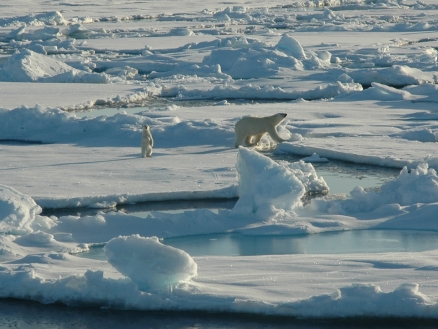Introduction to Management and Conservation of Wildlife in a Changing Arctic Environment

Published: July 7, 2014, 6:26 pm
Author: International Arctic Science Committee (Introduction to Management and Conservation of Wildlife in a Changing Arctic Environment)
This is Section 11.1 of the Arctic Climate Impact Assessment Lead Author: David R. Klein; Contributing Authors: Leonid M. Baskin, Lyudmila S. Bogoslovskaya, Kjell Danell, Anne Gunn, David B. Irons, Gary P. Kofinas, Kit M. Kovacs, Margarita Magomedova, Rosa H. Meehan, Don E. Russell, Patrick Valkenburg
What can be learned from present wildlife management systems in the Arctic that can be drawn upon to alter existing systems or to design new ones to more effectively deal with climate-induced changes, and other changes that may occur in the future? Climate is the driver of change that has been the primary focus of the Arctic Climate Impact Assessment, however, it is important to remember that changes from other causes are also underway within the Arctic and that these are also affecting arctic ecosystems, as well as the economies, lifestyles, and dependency on wildlife of people in the Arctic. Many of these changes will continue along similar trajectories into the future, influenced by changing climate. The effects of climate change on wildlife populations, their productivity, and their distributions, will increasingly threaten arctic wildlife at the species, population, and ecosystem levels. Systems for management and conservation of wildlife in the Arctic will face new challenges and must become adaptable to the changes taking place in the natural environment accelerated by climate change. However, management and conservation of wildlife serve human interests, therefore in addition to becoming adaptable to those changes taking place in the natural environment, efforts toward management and conservation of wildlife in the Arctic must also be adaptable to those changes taking place among human societies, both within the Arctic and within the global community as a whole.
The objectives of this chapter are:
- To present an overview of structures for management and associated conservation of wildlife of land and sea in the Arctic, emphasizing current functioning structures.
- To assess the effectiveness of existing structures for management and conservation of wildlife in the Arctic in view of wide variation in regional social, economic, and cultural conditions.
- To emphasize the role of indigenous people in management of wildlife and its conservation in the Arctic.
- To explain how the distinctive regional and cultural perspectives of arctic residents affect management and conservation of wildlife in the Arctic within the context of the broader perspectives of the Arctic by the global community.
- To assess the adaptability of existing structures for management and conservation of wildlife in the Arctic within the context of expected climate change, and in association with resource extraction, other industrial development, the local economy, and community life.
Chapter 11. Management and Conservation of Wildlife in a Changing Arctic Environment
11.1 Introduction (Introduction to Management and Conservation of Wildlife in a Changing Arctic Environment)
11.2 Management and conservation of wildlife in the Arctic
11.3 Climate change and terrestrial wildlife management
11.3.1 Russian Arctic and sub-Arctic
11.3.2 The Canadian North
11.3.3 The Fennoscandian North
11.3.4 The Alaskan Arctic
11.4 Management and conservation of marine mammals and seabirds in the Arctic
11.5 Critical elements of wildlife management in an Arctic undergoing change